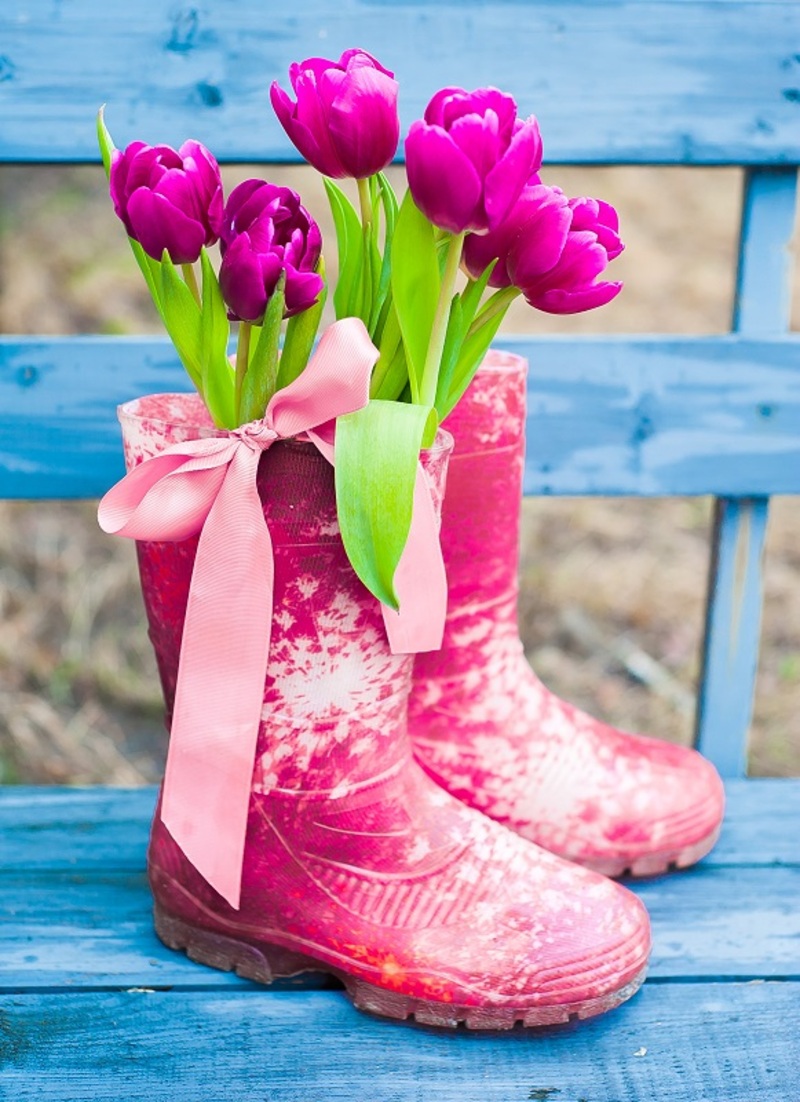Succeed in Growing Stunning Hydrangeas Using Proven Techniques
Posted on 27/08/2025
Succeed in Growing Stunning Hydrangeas Using Proven Techniques
If you've ever strolled through a garden filled with lush, colorful hydrangea blooms, you know just how breathtaking they can be. These classic shrubs offer jaw-dropping displays from late spring right through to autumn, making them a firm favorite among gardening enthusiasts. In this comprehensive, SEO-optimized guide, you'll discover how to succeed in growing stunning hydrangeas using proven techniques, ensuring your plants become the showstoppers of your landscape.

Understanding Hydrangeas: Discover Their Allure and Diversity
Before diving into the secrets of successful hydrangea cultivation, let's explore what makes these ornamental plants so special. Belonging to the genus Hydrangea, these deciduous shrubs are renowned for their bold globular, conical, or flat-topped flower clusters, which emerge in captivating shades of blue, pink, purple, white, and even green.
- Hydrangea Macrophylla (Bigleaf Hydrangea): Offers classic mophead and lacecap flowers. Flower color can change based on soil pH.
- Hydrangea Paniculata (Panicle Hydrangea): Tolerant of sun and drought; notable for its cone-shaped blooms.
- Hydrangea Arborescens (Smooth Hydrangea): Features large, round clusters; 'Annabelle' is a popular variety.
- Hydrangea Quercifolia (Oakleaf Hydrangea): Boasts oak-like leaves that redden in autumn and elongated white blooms.
Tip: Choosing the right species for your climate and garden space is critical to succeed in growing hydrangeas and achieving optimal health and performance.
Location is Key: Choosing the Perfect Spot for Hydrangeas
The first step in cultivating hydrangeas with stunning blooms is selecting an ideal planting location. Hydrangeas thrive in spots that emulate their native woodland habitats--think dappled sunlight and rich, moist soil. Here's how to get it right:
Lighting Requirements
- Morning Sun, Afternoon Shade: Most hydrangeas develop their finest flowers when basking in morning light, protected from harsh afternoon sun.
- Full Shade Risks: Although hydrangeas tolerate shade, too much can hinder blooming and weaken stems.
- Panicle Hydrangeas: These are an exception--they can handle full sun in cooler climates.
Soil Conditions
- Well-Draining Soil: Hydrangeas dislike soggy roots. Amend clay or compacted soil with compost or aged manure to improve structure and drainage.
- Consistent Moisture: Keep soil evenly moist, especially during the first two years and in periods of drought.
- Rich in Organic Matter: The addition of organic material supports the vast root systems hydrangeas develop.
Remember, perfect placement establishes the foundation for growing beautiful hydrangeas that will thrive for years.
Planting Hydrangeas: A Step-By-Step Proven Method
Planting your hydrangeas correctly is vital for long-term health and impressive blooms. Follow this tried-and-tested process to succeed in growing healthy hydrangeas:
- Dig a Generous Hole: Make the planting hole twice as wide and as deep as the root ball.
- Gently Loosen Roots: If roots are pot-bound, tease them apart to encourage outward growth.
- Add Organic Matter: Mix two parts native soil to one part compost or well-rotted manure in the hole.
- Set at the Right Depth: Plant so that the crown of the hydrangea sits level with the surrounding soil.
- Backfill and Water Thoroughly: Gently pat down soil around the roots and water in to settle the plant.
- Mulch: Apply a 2-3 inch layer of mulch around the shrub, avoiding direct contact with the stems to prevent rot.
The Art of Watering: Ensuring Thriving Hydrangea Plants
Getting water right is essential for growing lush hydrangeas. Insufficient moisture causes wilting, while too much can lead to root rot.
- Regular Deep Watering: Especially during dry spells, give hydrangeas a deep soak 1-2 times per week.
- Morning Schedule: Water early in the day to allow foliage to dry, preventing disease.
- Mulching: Helps retain soil moisture and keeps roots cool.
Proven technique: Insert your finger two inches into the soil; if it feels dry, it's time to water.
Feeding Hydrangeas for Spectacular Blooms
Hydrangeas are moderate feeders, but regular fertilization fuels their blooming power:
- Spring Feeding: Apply a balanced, slow-release fertilizer (like 10-10-10) when new growth emerges.
- Second Application: Panicle and smooth hydrangeas benefit from a light midsummer application.
- Soil Testing: Test soil for deficiencies every few years to tailor your feeding program.
Important: Over-fertilizing, especially with nitrogen-rich formulas, can encourage leafy growth at the expense of flowers.
Mastering Hydrangea Pruning for Optimal Growth
Pruning is one of the most misunderstood aspects of growing stunning hydrangeas. The key lies in knowing your hydrangea type:
Bigleaf & Oakleaf Hydrangeas
- Bloom on "Old Wood": Prune immediately after blooming but before mid-summer. Cutting later removes next year's flower buds!
- Minimal Pruning Needed: Remove only dead, damaged, or weak stems to retain shape and vigor.
Panicle & Smooth Hydrangeas
- Bloom on "New Wood": Prune in late winter or very early spring.
- Cut Back Hard: You can shorten stems dramatically to encourage larger blooms and a compact shape.
Pruning at the right time is a proven technique that safeguards your hydrangeas' abundant flowering now and in future seasons.
Adjusting Flower Color: Unlock the Secret Chemistry of Hydrangeas
Did you know you can change the color of some hydrangea blooms with simple amendments? Bigleaf hydrangeas (Hydrangea macrophylla) are famous for their color-changing abilities depending on soil pH:
- Blue Flowers: Acidic soil (pH below 6.0) and the presence of aluminum encourage blue blooms. Add aluminum sulfate or mulch with pine needles to lower the pH.
- Pink or Red Flowers: Alkaline soil (pH above 7.0) produces pink or even red blooms. Add garden lime to increase pH and decrease aluminum availability.
- White Hydrangeas: These generally stay white regardless of soil composition.
Note: Changes are gradual--adjust in early spring and be patient, as altering soil chemistry can take months.
Hydrangea Care Through the Seasons: Year-Round Success
Spring
- Remove winter mulch and dead wood.
- Fertilize as new growth begins.
- Check for winter damage and prune accordingly.
Summer
- Water deeply during hot, dry spells.
- Deadhead spent flowers for a tidier look, but leave them on for winter interest if you prefer.
- Monitor for pests such as aphids or spider mites.
Autumn
- Cease fertilization in late summer to allow stems to mature before winter.
- Enjoy the extended display of fading blooms and brilliant autumn foliage (especially Oakleaf hydrangeas).
Winter
- Apply mulch to insulate roots in colder climates.
- Avoid pruning, except to remove damage caused by ice or storms.
- Panicle and smooth hydrangeas can be pruned late in the dormant season.
Proven Pest and Disease Management for Vigorous Hydrangeas
While hydrangeas are relatively trouble-free, keep an eye out for these common issues:
- Powdery Mildew: Occurs in humid conditions--ensure good air circulation and avoid wetting foliage.
- Aphids & Spider Mites: Spray with a gentle blast of water or apply insecticidal soap.
- Leaf Spot & Rust: Remove affected leaves and avoid overhead watering.
Tip: Healthy plants are more resilient! Focus on proper watering, fertilization, and siting for the best natural defense.
Propagating Hydrangeas: Grow More from Your Best Blooms
Would you like more hydrangeas or want to share your favorites with friends? Try these propagation methods to expand your hydrangea collection:
Softwood Cuttings
- Take non-flowering shoot tips in late spring or early summer.
- Trim to 4-6 inches, strip lower leaves, and dip in rooting hormone.
- Plant in moist, sterile potting mix in a shaded spot.
Layering
- Bend a low, flexible branch to the ground in spring.
- Remove a small section of bark and pin it into the soil.
- Roots will develop within months--separate and replant the new plant the following spring.
Proven propagation techniques ensure your stunning hydrangeas can be enjoyed year after year--and shared with fellow gardeners!
Design Inspiration: Show Off Your Striking Hydrangeas
Once you've mastered how to grow gorgeous hydrangeas, integrate them for dramatic impact:
- Foundation Plantings: Hydrangeas soften the outline of homes and outbuildings with bold foliage and blooms.
- Mixed Borders: Pair with evergreens, hostas, and shade-loving perennials to create a lush, layered effect.
- Hedges & Screens: Many hydrangea varieties form beautiful privacy plantings.
- Container Gardening: Compact types like 'Cityline' or dwarf panicle hydrangeas thrive in large pots for patios and balconies.
Hydrangea flowers also make excellent cut flowers--fresh or dried--for home decorating.

Frequently Asked Questions About Succeeding With Hydrangeas
1. When is the best time to plant hydrangeas?
Plant hydrangeas in early spring or fall when the weather is cool and moist to give roots time to establish before stressful heat or cold.
2. Why aren't my hydrangeas blooming?
Potential causes include improper pruning, late spring frosts damaging buds, too much shade, or excess nitrogen in the soil.
3. Should I deadhead hydrangea flowers?
Deadheading improves aesthetics, but isn't strictly necessary. Late-season flowers can be left to provide winter interest.
4. How often should I fertilize hydrangeas?
Fertilize in early spring and, for certain varieties, a second light feeding in midsummer. Always follow product instructions.
5. Can I grow hydrangeas in containers?
Yes! Choose compact varieties and ensure excellent drainage and consistent watering for best results.
Conclusion: Your Guide to Succeeding in Growing Spectacular Hydrangeas
With these proven techniques for growing hydrangeas, anyone can transform their yard with dazzling, long-lasting blooms. From careful site selection, attentive planting, proper watering, and periodic pruning, to experimenting with flower color--there's a scientific art to perfecting hydrangea care. Use these expert-backed strategies, and you'll not only succeed in growing these beloved shrubs, but your hydrangeas will become the pride of the neighborhood.
Start today and watch your garden thrive with truly stunning hydrangeas that return year after year--bigger and bolder than before!
Latest Posts
Succeed in Growing Stunning Hydrangeas Using Proven Techniques
Simple Steps to Enhance the Life of Cut Flowers
Top 12 Flowers Known for Their Exceptional Longevity





